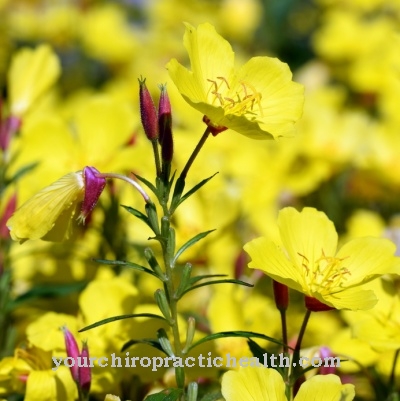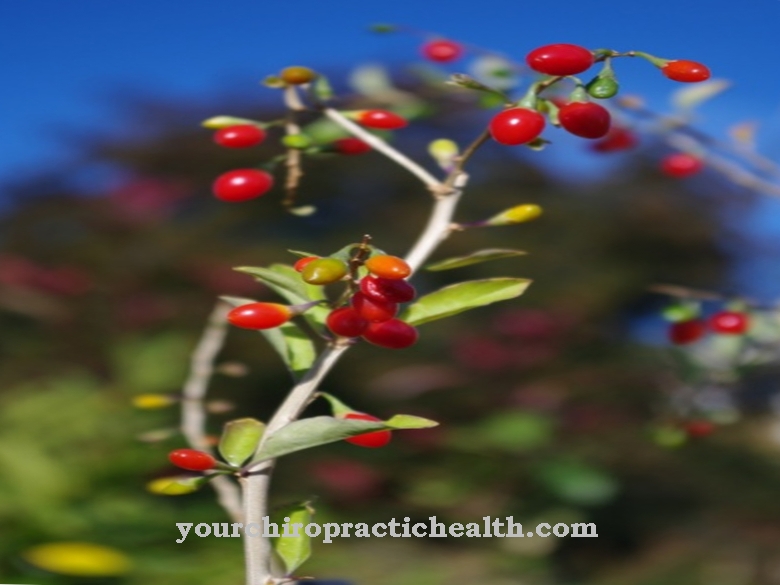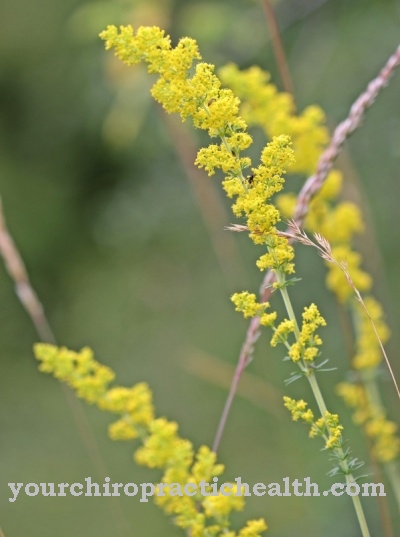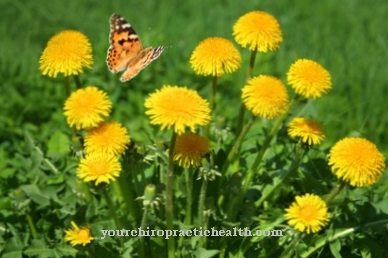Occurrence and cultivation of the common Oregon grape

The genus Mahonia lists 100 different species that come from East Asia, the Himalayas, and North and Central America. The common Oregon grape comes from the Pacific and western North America and is also known under the names ornamental barberry and the thorn-leaved. In Europe, the barberry often grows in the form of overgrown stands in forests. The common Oregon grape is a small shrub with many shoots that grows upright and broadly bushy one meter high. The leaf arrangement is change-resistant and composed and the leaf shape is pinnate.
The bright golden yellow flowers grow in dense five to eight centimeter panicles of grapes, each bearing six flowers. Flowering time is from the beginning of April to the end of May with a rich supply of nectar and pollen. The evergreen leaves can be up to twenty centimeters long, the leaflets are usually 3.5 to 8 centimeters long. They are egg-shaped to elliptical.
Their color varies from shiny dark green to light green on the underside. The leaf margins are wavy and each have five to nineteen spiky teeth. In autumn and winter, this small shrub with its purple-red to purple-brown color is beautiful to look at. The common Oregon grape bears elliptical purple-black and light-blue frosted fruits that can grow up to one centimeter.
Mahonia aquifolium prefers sunny to shady spots and is very adaptable as it grows on both dry and moist and nutritious soil. The barberry plant is tough as deep roots, as it is frost- and smoke-hard and cut-resistant, withstands root pressure, tolerates urban climates and also grows on acidic and slightly alkaline subsoil that is less suitable for plants.As an ornamental plant, it grows in parks, hedges and gardens. Since the evergreen Oregon grape is attractive all year round, it is also popular in the area of greenery. The undemanding hedge plant is due to its slow growth easy to care for and rarely pruned.
Effect & application
The collection time for the spherical and pea-sized fruits as well as the bark and roots lasts from August to December. The Mahonia bark must not be injured, as alkaloids are lost when washing. The roots are cleaned in cold water and used as chopped pieces in a dried state. In order to obtain the naturally occurring berberine hydrochloride in barberry, the roots are extracted using a chemical process with dilute sulfuric acid.
The berberis alkaloids and bitter substances of the fruits, roots and bark have an antibacterial, blood-purifying, tonic and diuretic effect. They develop a wide range of activity against fungi, bacteria and amoeba, as they react with the DNA (intercalation), trigger cell death and prevent the growth of various enzymes. They also have a proliferation-inhibiting effect. For this reason, Mahonia aquifolium is often used for infectious diseases.
The alkaloids contain the active ingredients protoberberine and isoquinoline alkaloids (up to 13%), including berberine (main ingredient), jatrorrhizin, columbamine, and palmatine. The Mahonia root is effective against dyspepsia, diarrhea, fever, biliary tract and skin diseases as well as urinary tract infections. The edible berries have an alkaloid content of 0.5 percent and are used to make fruit wines and jams. Mahohnia aquifolium is used in homeopathy in the form of globules.
These are used for loss of appetite, joint inflammation, rheumatism, gout, bladder stones, states of exhaustion, back pain, heartburn, psoriasis, kidney stones, kidney gravel, kidney infections, hemorrhoids. The positive effect of the barberry plant has been proven by studies in herbal medicine. The most common use of the pretty North American is in the area of skin diseases in the form of ointments.
For Mahonia ointments, the normally poisonous bark is used as the starting material and medicinal plant extract. In a complex process, an extract, dried from the bark of the shrub, is gently produced. This bark extract, consisting of yellowish, glittering crystals, is mixed with the liquid components of the mahonia cream and gives it the typical, rich yellow color, which is reminiscent of the flowers of the shrub.
Importance for health, treatment & prevention
As a medicinal plant, Die Stechblättrige is not to be used without further ado, since all parts of the plant, especially the root and stem bark, are poisonous to humans. In the past, the mahonia bark was used as a tincture for rashes and indigestion.
Nowadays the mutagenic effect is known. For this reason, it is no longer used in its pure form as a tincture, but exclusively in the form of professionally dosed ointments with a 10 percent Mahonia bark tincture and as a harmless remedy in homeopathy. The use of unprocessed berberis ingredients can be mutagenic and cancer-promoting due to its high content of natural berberine. The use of pure berberine-containing plant extracts should therefore not be used.
Mahonia root extracts and dried barberry bark are available in pharmacies. For ecological reasons, too, it is advisable to plant the sting thorn in the form of a bee pasture, as the deep yellow pinnate flowers offer the bees rich food. The dark blue fruits before they are processed are slightly poisonous and can be confused with blueberries.
Therefore, they should not get into the hands of children as they can cause nausea, vomiting and diarrhea. Because of its poisonous components, common Oregon grape is used exclusively in the form of ointments and in homeopathy, as there are no clinical studies in conventional medicine and Oregon grape and barberry are classified as negative by Commission E.
























.jpg)



